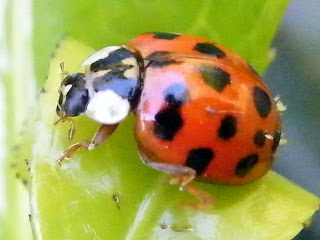There are many other options for using manure other than direct land application. Even direct use as fertilizer is an allowable method if it is well regulated as is the case with Organic Farming Operations. Its application must meet certain criteria. For example, manure must be applied on a plot of land for a duration of three years and also meet soil testing standards before crops can be sold as an organic commodity [Organic Farming Doc] -- Link to Documentation). Manure could also be mixed with other organic types of wastes to become a usable compost. Even in these situations, care must be taken with handling and storage of manure. Manure can still be effectively used for nutrient value if stored or used in well managed lagoon pools. These methods also reduce pathogens and odors eminating from it. Manure has been finding increasing applications in the bioenergy / biomaterials sectors of industry. There are a slew of possible applications for the use of manure as applied towards bioenergy as it can be converted into a biogas or biofuel using methods such as Anaerobic Digestion. In fact, more usable types of biofuels are produced from the combination of manure and an energy crop such as grass instead of just one of these sources used alone. These methods can also be applied towards the production of biomaterials such as bioplastic type compounds called PHAs (Polyhydroxyalkanoates) [Gungor et al 2009]. Conversion of manure into biofuel or biomaterials has great potential since less land requirements are needed as opposed to direct land application. These facilities can also be located nearby livestock or poultry feedlots and dairy facilities. These production processes are oftentimes well regulated and should not be an environmental or health concern as well as being a storage or transportation liability. It may also be possible to recycle the biomass (microbial, fungi or algae) into usable fertilizer material once it has already been used for bioenergy purposes.
REFERENCES
1. "Consolidation in U.S. Meatpacking - Developments in Meat Consumption and Livestock Production", Agricultural Economics Report No AER785 [1999], MacDonald J., Ollinger M., Nelson K., Handy C.
2. "Profits, Costs and the Changing Structure of Dairy Farming - Changes in Size and Location of U.S. Dairy Farms", USDA Economic Research Service Publication [2007], MacDonald J., O'Donoghue E., McBride W., Nehring R., Sandretto C., Mosheim R.
3. "Biogas Production : Current State and Perspectives", Applied Microbiology and Biotechnology Vol 85 pgs 849-860 [2010], Weiland P.
4. "Prefermentation of Liquid Dairy Manure to Support Biological Nutrient Removal", Bioresource Technology Vol 100 pgs 2124-2129 [2009], Gungor K., Muftugil M., Ogejo J.A., Knowlton K., Love N.
KEYWORDS: Biogas, Anaerobic Digesters, Manure fertilizer use, Pathogens from manure, Composting, Non-point source pollution, Lagoon pools, Alternative manure uses, Bioelectricity from manure, PHA production, Poultry - Swine - Cattle - Dairy Manures, Odor control of manure








